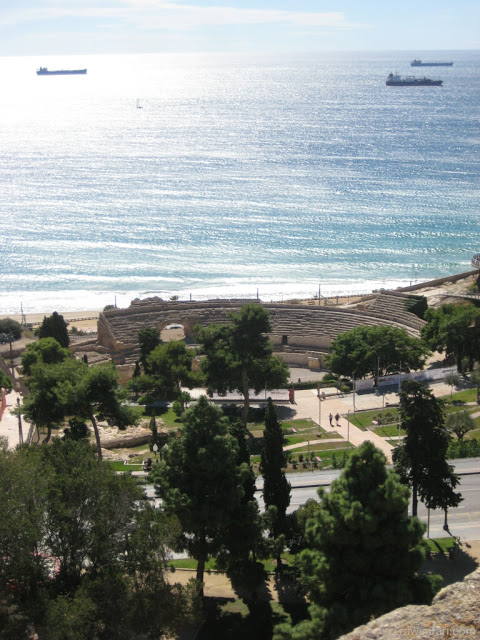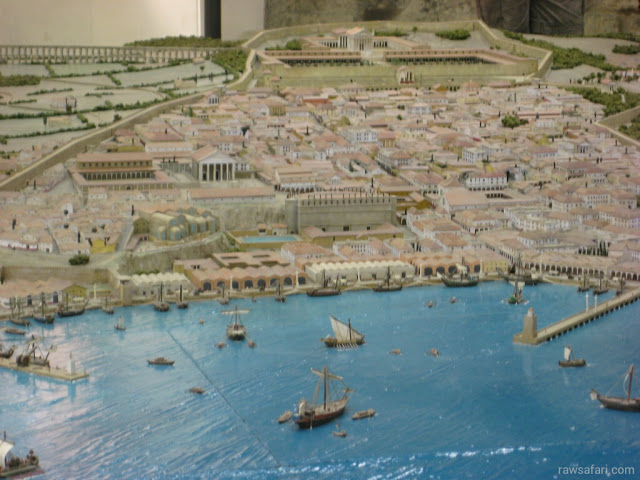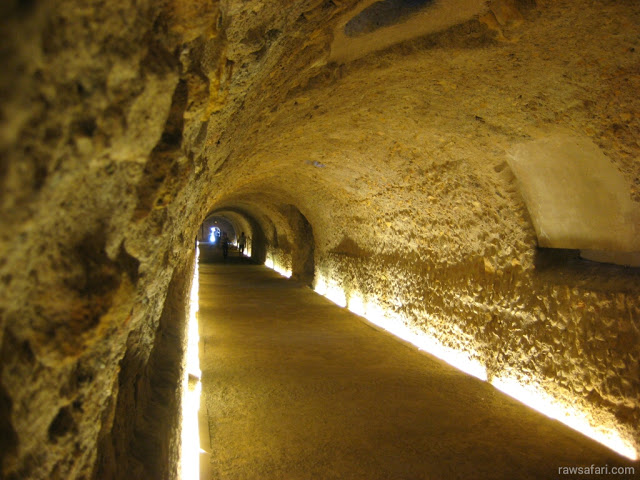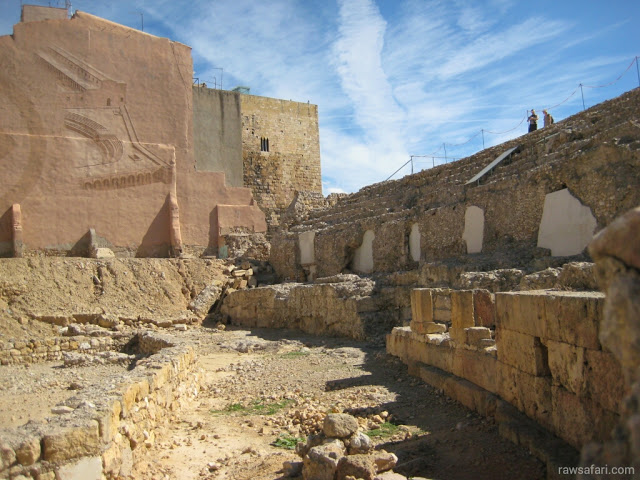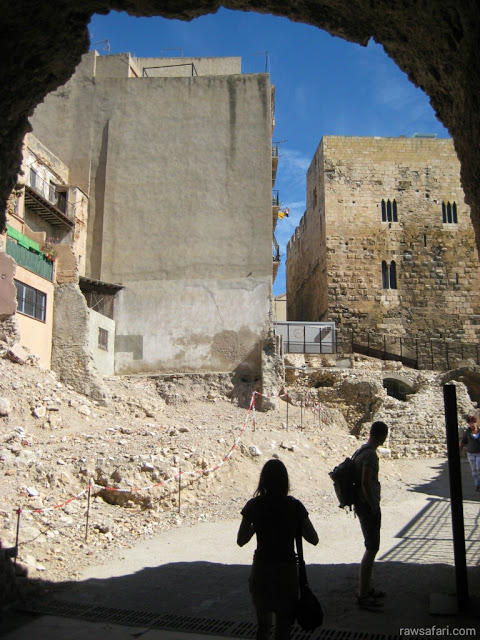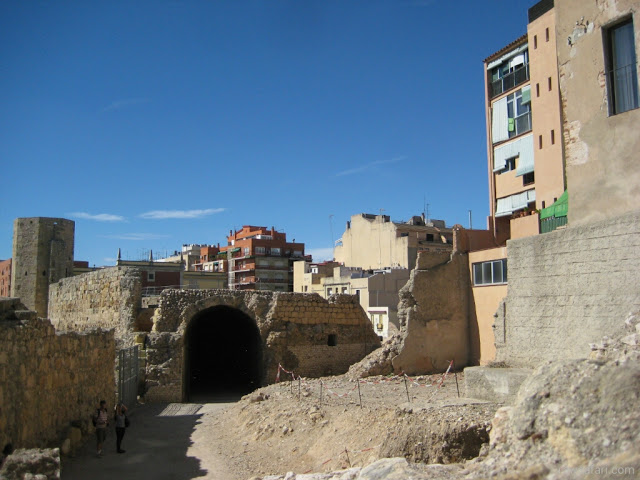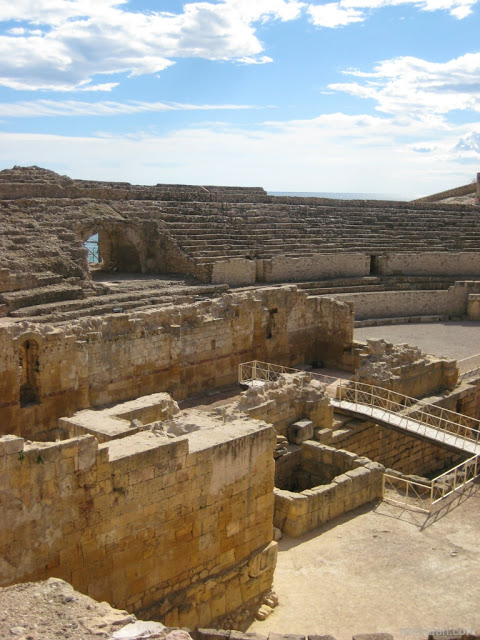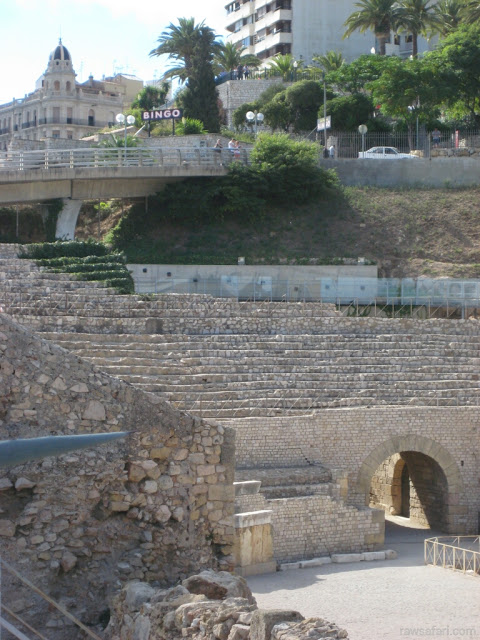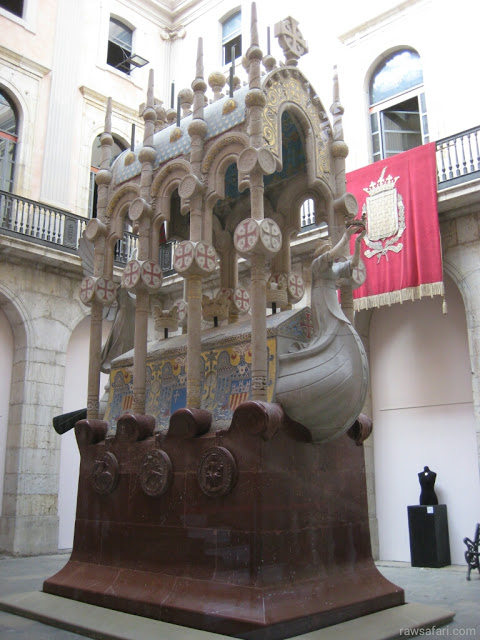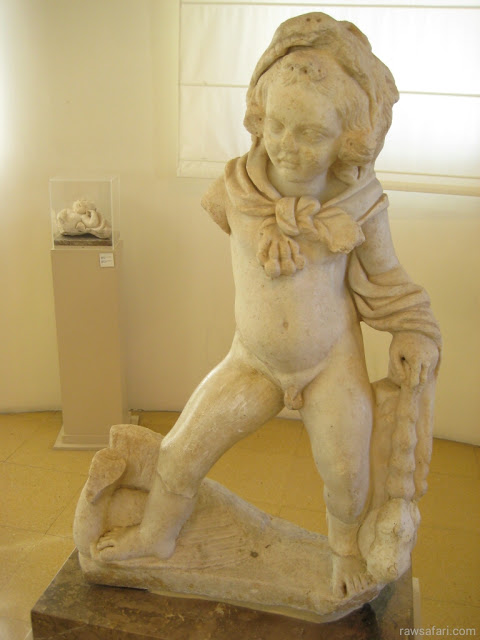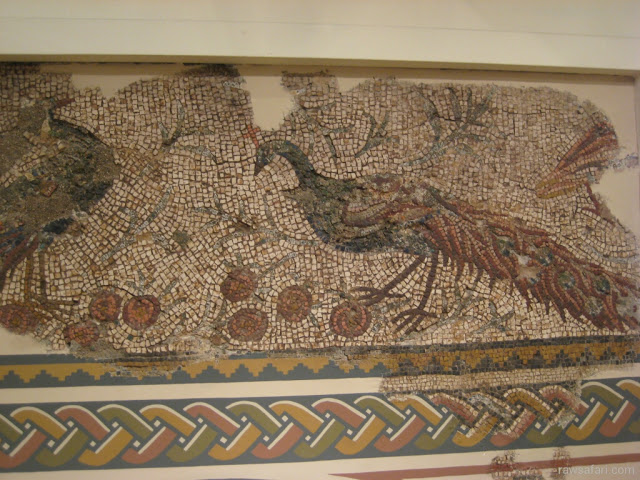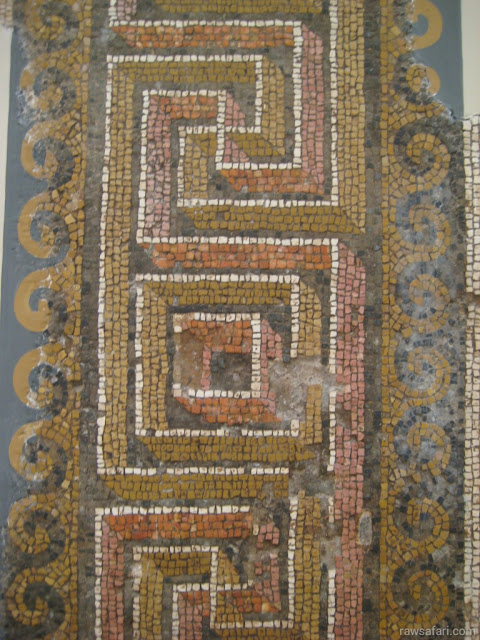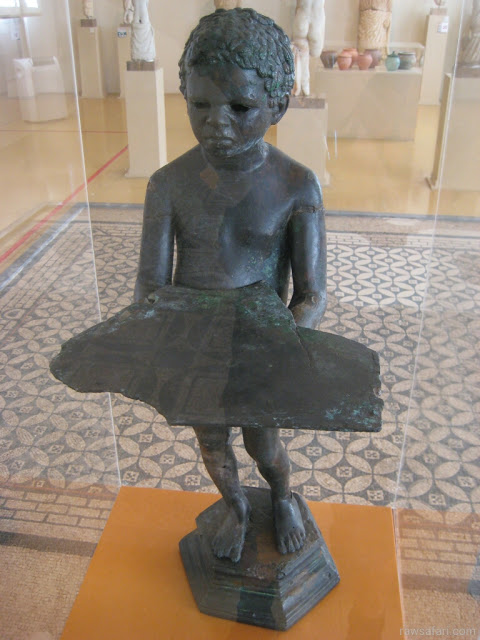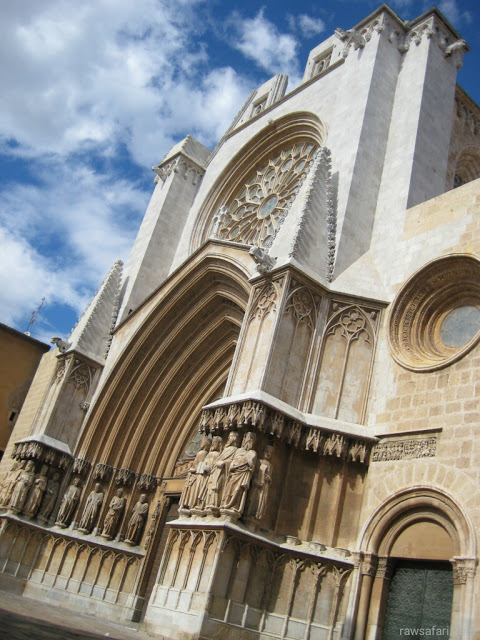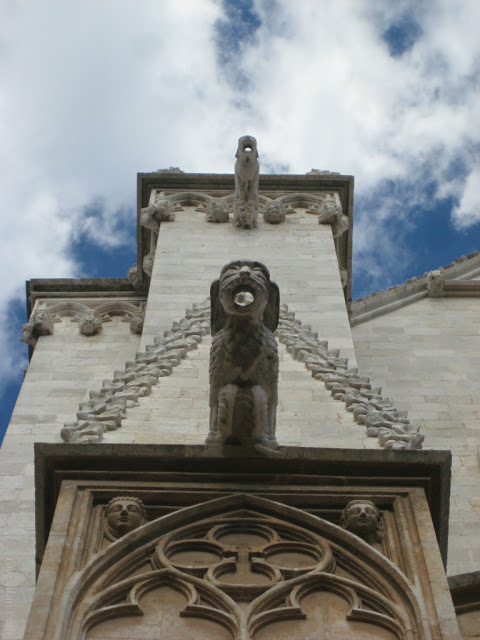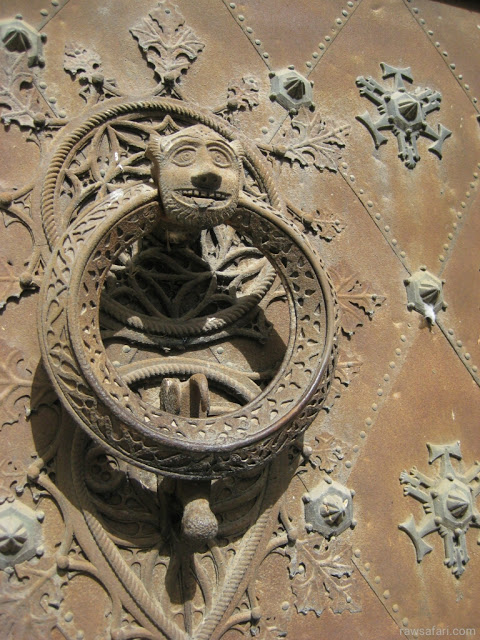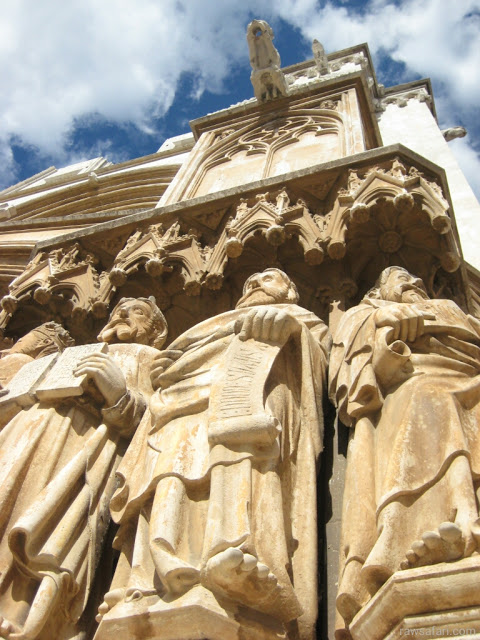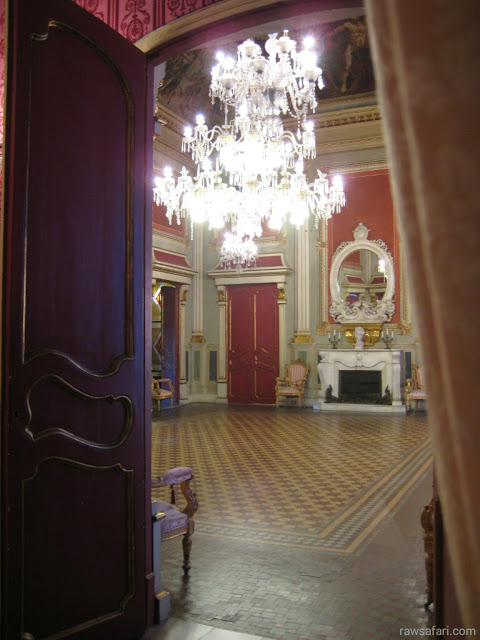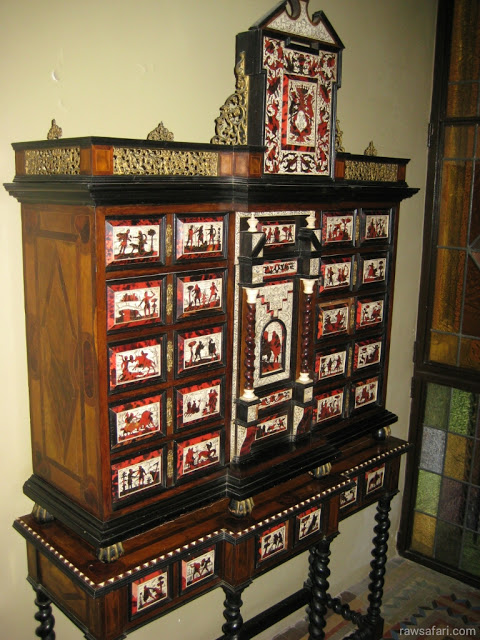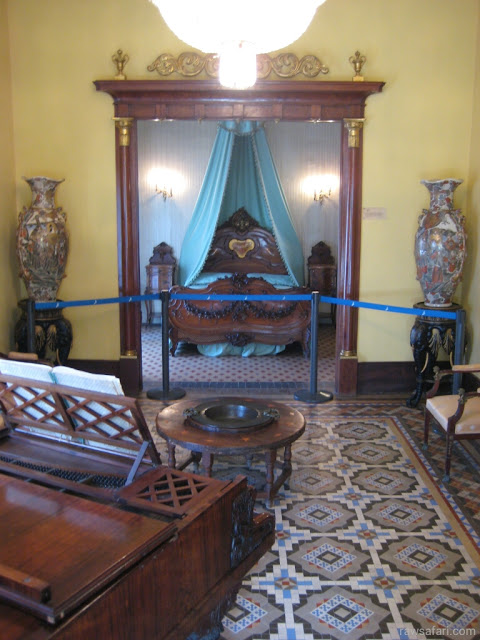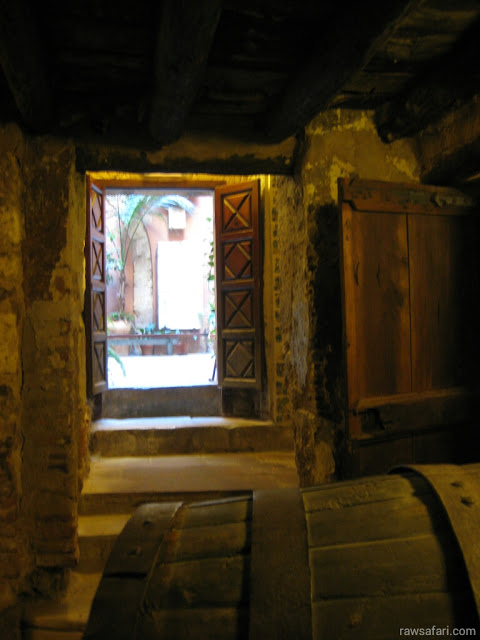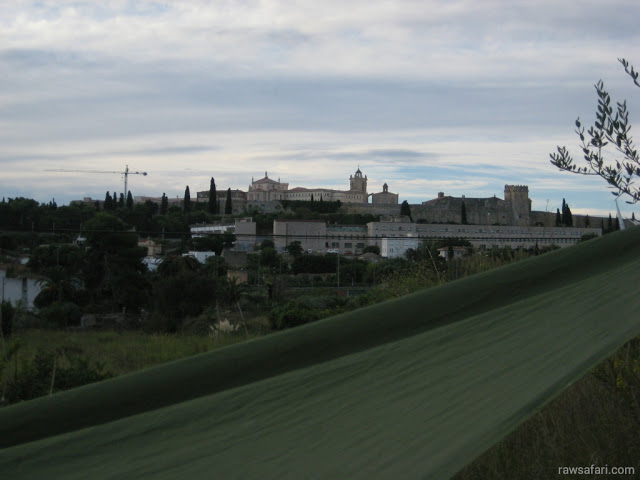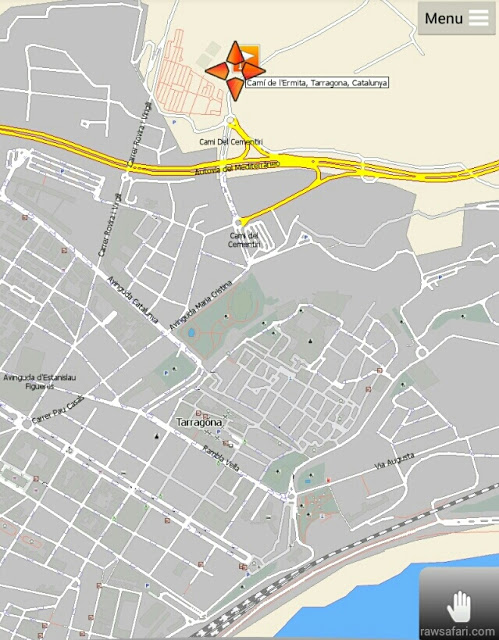…The area formerly housing the Roman circus was turned into a slaughterhouse, and the catacombs of the amphitheatre were gradually filled with rubbish by the city’s inhabitants, who used them as a convenient refuse dump…
We wait a while for a ride out of Callafel, Spain. Finally Nick offers to take us to Lleida.
On arrival, Lleida is dry, dusty, and smells quite strongly of pig farms. We decide to head back to the coast. After a lot of hustling, we finally land a ride to Taragona, with Fernando and Maria, two very friendly Tarragonians who give us a quick tour of the city before dropping us off near the old part of town.
(the ruins of the Roman Amphitheatre seen from the top of the castle ruins)
(a model showing how Tarragona looked in Roman times)
It is immediately apparent that Tarragona is special. The geographic setting is spectacular, the town perched on a steep hillside, overlooking the green expanse of the Mediterranian below. The climate is warm and dry, but the hills surrounding the city are green and fertile. The city is compact and dense, focused on the ‘old city’, a mosaic of Roman, Medieval and modern architecture.
The Roman Emperor Hadrian was famously passionate about Tarragona. He wrote to his friend, the city’s governor, describing Tarragona in glowing terms, and speaking fondly of the time he had spent in the city. In Hadrian’s day, Taragona was a metropolis of 40,000. The city boasted a Provincial Forum, a circus, an amphitheatre, and temples, and was capital of Rome’s Hispanic conquest in the north.
Many traces remain of the Roman era. During the middle ages the great Roman city was largely demolished and buried, and the 14th and 15th century city was erected over the top. The area formerly housing the Roman circus was turned into a slaughterhouse, and the catacombs of the amphitheatre were gradually filled with rubbish by the city’s inhabitants, who used them as a convenient refuse dump.
It was not until the 1970s that archeologists undertook extensive work to reveal the lost Roman world under Taragona’s streets. Now large portions of the ruined circus and amphitheatre can be explored, and the Museum of Archeology hosts a fine collection of antiquities.
Walking the densely packed streets of the old city is great for eye candy. Roman ruins, medieval arches and gauche 20th century flats jostle shoulders and lean against each other in a chaotic jumble. The archeological excavation appears to be ongoing, and the loose bricks of the neighbouring blocks of flats are crumbling into the Roman ruins in some places.
Zero budget accommodation in Tarragona is available in the overgrown fields adjoining the cemetery, on the city’s northern margin, approx’ an 8 minute walk from the old city.
(the underground passages of the ruined Roman Circus – at one time, the city’s rubbish dump)
(what remains of the circus structure)
(ancient ruins, a castle, and apartment blocks stacked on top of each other)
(the ruins of the Roman amphitheatre up close)
(medieval weirdness…)
(hercules as a boy; Roman sculpture uncovered beneath Tarragona)
(treasures from Tarragona’s museums)
(the beautiful medieval cathedral)
(some interiors of the “Castellarnau” stately home, former residence of kings and nobles, now museum)
(Tarragona’s old city, seen from our camp)
(this is where the the free camping’s at, trampers)
>> More about Spain.
>> Read more stories about sneaky camping.

